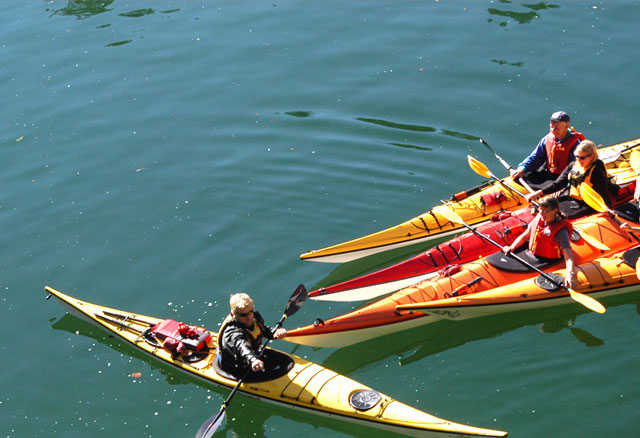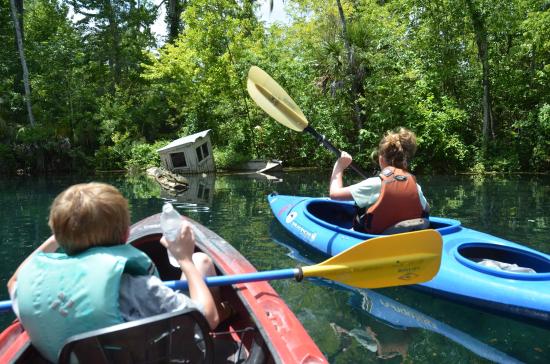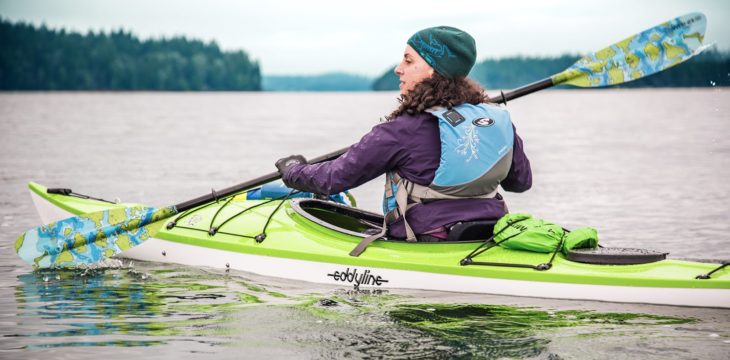One cannot emphasize enough the importance of good preparation when it comes to kayaking. Knowing what to do and what to bring can certainly save your from needless hassle, injuries, and mishaps – it might even allow you to help out a fellow kayaker along the way! That said, in this article we will focus on some essentials that you should definitely take with you when you are kayaking.
Before we start with our list, here is an important reminder first: kayaks have weight limits and it is extremely important that you follow them, especially if you are paddling on a tricky trail. That said, do not just shove everything into your bag. Consider which ones you need the most and/or consider lighter alternatives.
So, are you ready? Here are the things you should bring kayaking:
Flotation device
 It does not matter if you are a beginner or a long-time kayaker. Buoyancy aids are incredibly important and you should never go kayaking without them. Take note that while buoyancy aids specifically suited for kayaking operates in the same way as life jackets, these aids allow for better movement. Flotation devices or buoyancy aids are provided by kayaking schools and places which rent out kayaks, so you do not have to shell out money for one. However, if you plan on taking kayaking seriously, it will be a lot better if you have one tailor made for you.
It does not matter if you are a beginner or a long-time kayaker. Buoyancy aids are incredibly important and you should never go kayaking without them. Take note that while buoyancy aids specifically suited for kayaking operates in the same way as life jackets, these aids allow for better movement. Flotation devices or buoyancy aids are provided by kayaking schools and places which rent out kayaks, so you do not have to shell out money for one. However, if you plan on taking kayaking seriously, it will be a lot better if you have one tailor made for you.
Not all kayakers wear helmets, but just to stay on the safe side, it is better if you wear one when kayaking. This is especially the case if you are a beginner or if you are planning to navigate difficult trails. Helmets will not only protect you from hurting yourself with your paddle (trust me, this happens more often than kayakers would care to admit), it will also keep you from getting head injuries should your boat capsize.
Wet shoes
It might be tempting to just wear your trusted rubber shoes or your favorite boat shoes, but if you want to stay on the safe side (and if you do not want to ruin your shoes), you should invest in wet shoes. Wet shoes are specifically made for water sports and are typically made from neoprene. The rubber soles are especially designed to make it easier to walk on slippery surfaces (i.e., your kayak; you surely would not want to slip and hurt yourself or, worse, fall into the water). Unlike usual trainers, wet shoes do not absorb water and, as such, will not get heavy even when wet. Moreover, they are not that expensive so you should definitely consider investing in one before kayaking.
Wet suit or dry suit
If you are kayaking in calm waters, a shirt and shorts might suffice. However, if the water temperature is low or if you are paddling in rapids, it is advisable to wear a wet suit or a dry suit. These will protect you from the sun while at the same time keep you warm. After all, getting wet is inevitable in kayaking and you have to be prepared for the eventuality of your kayak capsizing. The last thing you want is to fall into the water and end up shivering the whole trip back to the shore.
If you have sensitive hands or if you are having difficulty in gripping the paddle properly, then consider investing in kayaking gloves. This will help you get a better hold of the paddle and, therefore, will greatly contribute to a good paddling technique.
Dry bag
 Dry bags are watertight and will help you keep your belongings dry even if your kayak capsizes, so you should definitely invest in one. (No need to worry, dry bags are not expensive and are readily available in sports stores.)
Dry bags are watertight and will help you keep your belongings dry even if your kayak capsizes, so you should definitely invest in one. (No need to worry, dry bags are not expensive and are readily available in sports stores.)
Change of clothes
In case you are wondering what you will need a dry bag for, this is one of the reasons. Make sure that you bring a change of clothes with you when you are kayaking so you have something to change into after you get back from paddling. Also, in the eventuality that you cannot get back to the shore immediately and have to stop somewhere first, it is incredibly helpful to have dry clothes with you.
Communication device
Another thing you should keep in your dry bag is your communication device. It could be your phone or tablet – whatever works for you. This is especially important for beginners and/or if you are going kayaking on a long trail. Having a communication device with you will help you get help in case of accidents, as well as give other people the means to contact you in case of an emergency.
Food and water
Of course, we are not talking about a full-course meal here. Just bring something to munch on (definitely something that will not require utensils) and enough water to keep you hydrated. Unexpected things can happen during the trail, so it is better to have something to eat in case your itinerary will have to be extended. Also, keeping hydrated is incredibly important, especially on a warm day. You might be surrounded by water when you are kayaking, but always remember that drinking water is not immediately accessible so prepare accordingly.
And those are the nine things you should never forget to bring with you when kayaking. Do note, however, that this is more of a beginner’s kit. If you are planning to kayak on more difficult trails or looking for a kayak to take fishing, or if you are planning a longer kayaking activity, then you should definitely invest in more advanced kayaking gear (think kayaking knife, rope bag, and spray deck). For those of you who are just getting started on kayaking though and are looking for , these nine kayaking kit basics should do the trick. No worries because your kayaking instructor will certainly bring the more advanced items that you might need while paddling.
That said, before you head out on your first kayaking adventure, make sure that you have this checklist.





